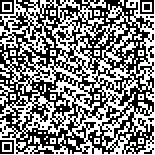翟晓雪,潘钰,吴琼,等.踝关节智能牵伸训练对偏瘫患者踝关节生物力学特性及其运动功能和日常生活活动能力的影响[J].中华物理医学与康复杂志,2021,43(1):25-29
扫码阅读全文

|
| 踝关节智能牵伸训练对偏瘫患者踝关节生物力学特性及其运动功能和日常生活活动能力的影响 |
|
| |
| DOI:10.3760/cma.j.issn.0254-1424.2021.01.006 |
| 中文关键词: 偏瘫 智能牵伸 僵硬度 肌力 关节活动度 日常生活活动能力 |
| 英文关键词: Hemiplegia Stretching Stiffness Muscle strength Range of motion Activities of daily living |
| 基金项目:北京市自然科学基金(12018B1003);北京市科技计划课题(Z181100003118004) |
|
| 摘要点击次数: 6073 |
| 全文下载次数: 10948 |
| 中文摘要: |
| 目的 观察踝关节智能牵伸训练对脑卒中偏瘫患者踝关节生物力学特性、平衡、步行功能和日常生活活动能力的影响。 方法 将脑卒中后偏瘫患者18例按随机数字表法分为试验组和对照组,每组患者9例。2组患者均接受常规临床药物和常规康复治疗,在此基础上,试验组每日增加20 min的踝关节智能牵伸训练,对照组则将常规康复治疗时间延长20 min。于治疗前、治疗2周后(治疗后)对2组患者进行踝关节生物力学特性评估[包括踝关节僵硬度、主动关节活动度(AROM)、被动关节活动度(PROM)和肌力]和临床量表评分[包括改良Ashworth分级(MAS)、Fugl-Meyer下肢运动评分(FMA-LE)、Berg平衡量表评定(BBS)、6分钟步行试验(6MWT)、改良巴氏指数(MBI)]。 结果 治疗后,2组患者的背屈和跖屈肌力、背屈和跖屈AROM、BBS、FMA-LE评分较组内治疗前均明显改善,差异均有统计学意义(P<0.05),且试验组的跖屈PROM、K背屈、MBI较组内治疗前亦显著改善,差异均有统计学意义(P<0.05)。治疗后,试验组跖屈和背屈肌力分别为(158.44±14.61)N、(130.22±22.12)N,均显著优于对照组治疗后,差异均有统计学意义(P<0.05)。 结论 踝关节智能牵伸训练可有效地降低偏瘫患者踝关节僵硬度,改善其踝关节肌力、关节活动度和日常生活能力。 |
| 英文摘要: |
| Objective To observe the effect of ankle stretching on ankle biomechanics, balance, walking ability and ability in the activities of daily living among stroke survivors. Methods Eighteen hemiplegic stroke survivors were randomly divided into an experimental group (n=9) and a control group (n=9). In addition to routine medication and rehabilitation training, the experimental group received 20 minutes of ankle joint stretching daily while the control group underwent an additional twenty minutes of routine rehabilitation training. Before and after the treatment, both groups′ ankle joint stiffness (K), muscle strength, active range of motion (AROM) and passive range of motion (PROM) were evaluated. They were also assessed using the modified Ashworth scale (MAS), the Fugl-Meyer lower extremity assessment (FMA-LE), the Berg balance scale (BBS), the 6-minute walking test (6MWT) and the modified Barthel Index (MBI). Results After two weeks of treatment significant improvement was observed in the AROM and muscle strength of both groups in dorsiflexion and plantarflexion. The average BBS and FMA-LE scores of both groups had also improved significantly. Significant improvement in the average PROM of plantarflexion and the K of dorsiflexion, as well as in average MBI score was observed only in the treatment group. After two weeks the treatment group′s average muscle strength in plantarflexion and dorsiflexion was significantly better than the control group′s. Conclusions Stretching can reduce ankle stiffness, improve the range of motion, muscle strength, and ability of in the activities of daily living after a stroke. |
|
查看全文
查看/发表评论 下载PDF阅读器 |
| 关闭 |